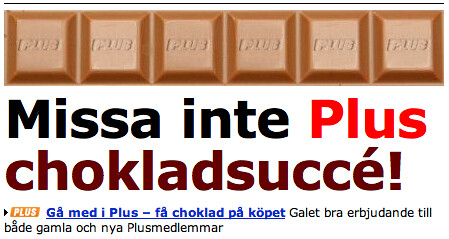Det började med att Bercovici åt lunch tillsammans med sin kollega Felix Salmon samt en av cheferna på Financial Times(.com), Rob Grimshaw. Salmon försökte under lunchen övertyga Grimshaw att Financial Times borde överge alla planer på att få läsarna att betala för innehållet på webben.
 FT.com har idag en hybrid-modell där läsarna får tillgång till ett begränsat antal artiklar gratis varje månad; när du överskridit detta antal ombes du att registrera dig och därefter prenumerera (betala). Salmon hatar den här modellen. Dels menar han att den har negativ effekt på läsarbeteendet - det uppmuntrar helt enkelt inte till att surfa vidare på sajten. Dels kommer läsare som förstår modellen (och som inte vill prenumerera) navigera försiktigt och enbart klicka på de artiklar som de verkligen vill ta del av. Detta bidrar i förlängningen till färre besökare samt minskade annonsintäkter. Ett minskat "buzz" (internlänkande, goodwill, googlejuice) på nätet i stort är exempel på andra konsekvenser för FT, menar Salmon.
FT.com har idag en hybrid-modell där läsarna får tillgång till ett begränsat antal artiklar gratis varje månad; när du överskridit detta antal ombes du att registrera dig och därefter prenumerera (betala). Salmon hatar den här modellen. Dels menar han att den har negativ effekt på läsarbeteendet - det uppmuntrar helt enkelt inte till att surfa vidare på sajten. Dels kommer läsare som förstår modellen (och som inte vill prenumerera) navigera försiktigt och enbart klicka på de artiklar som de verkligen vill ta del av. Detta bidrar i förlängningen till färre besökare samt minskade annonsintäkter. Ett minskat "buzz" (internlänkande, goodwill, googlejuice) på nätet i stort är exempel på andra konsekvenser för FT, menar Salmon.I alla fall. Medan Salmon och Grimshaw polemiserade satt Bercovici och funderade på om det inte fanns en helt annan väg att gå. Hans lösning? Hämta inspiration från TV-spelen:
Here's how it would work: As you browse FT.com, you have a small status bar at the bottom of your screen, akin to the "life bar" in first-person shooter games that shows you how healthy or injured your character is. In this case, the status bar shows you how many free page views you have left.
Now here's the fun part: If you want to exceed your quota but you don't want to pay, there are other ways.
In video games, you can usually replenish your life bar by collecting floating gold coins or stars or mushrooms or what have you; why not do the same on a newspaper site? Scatter them about randomly so that readers are rewarded for exploring different sections of the site, reading to the end of stories, etc. And extra free page views could be only one of the rewards. Readers who compile enough coins/stars/mushrooms could win all sorts of goodies: Free admission to FT conferences, lunch with an FT writer, and so on.
 Nätläsarna har hittills visat sig allergiska mot att betala för artiklar på nätet. Även om exempelvis Aftonbladet Plus har x antal tusen prenumeranter (någon som har statistik?) så är dessa fortfarande en försvinnande liten procent av de miljoner som varje vecka surfar in på sajten.
Nätläsarna har hittills visat sig allergiska mot att betala för artiklar på nätet. Även om exempelvis Aftonbladet Plus har x antal tusen prenumeranter (någon som har statistik?) så är dessa fortfarande en försvinnande liten procent av de miljoner som varje vecka surfar in på sajten. Jeff Bercovicis modell skulle onekligen förstärka läsarmedverkan. Samtidigt erbjuder det besökaren fler alternativ än att, som hos exempelvis FT.com, antingen surfa vidare eller sträcka sig efter plånboken. Och andra sidan - förvandlas dagstidningarnas webbsidor till Doom 3, så kommer nog alla tappa intresset.
Vad tror ni?





Inga kommentarer:
Skicka en kommentar